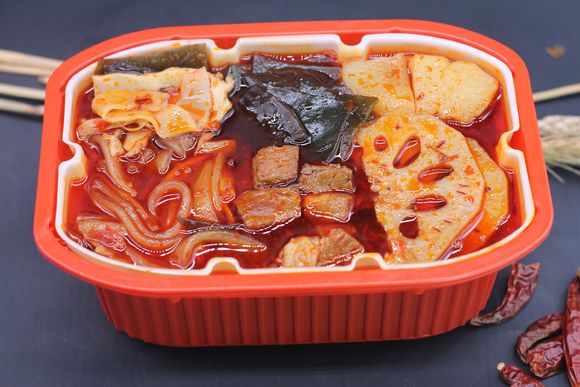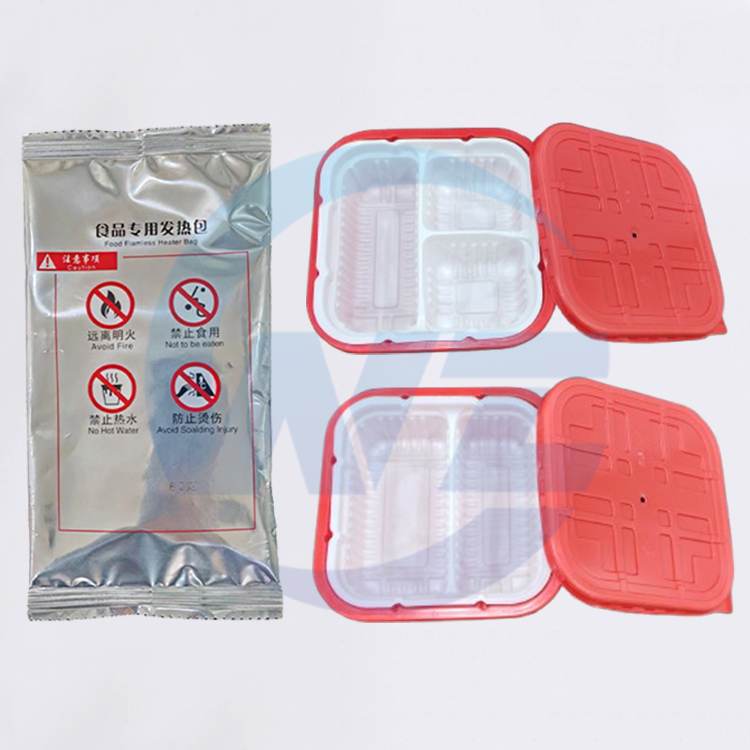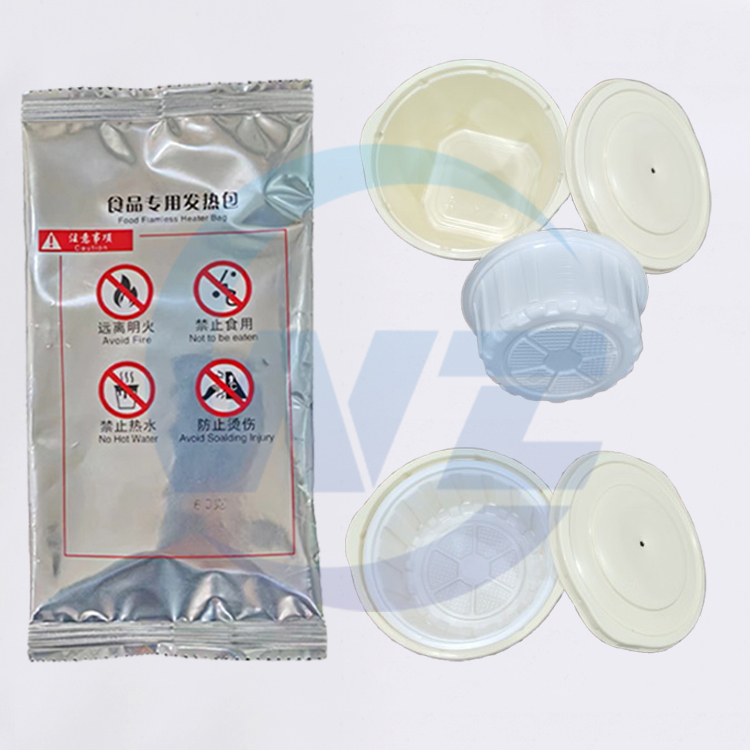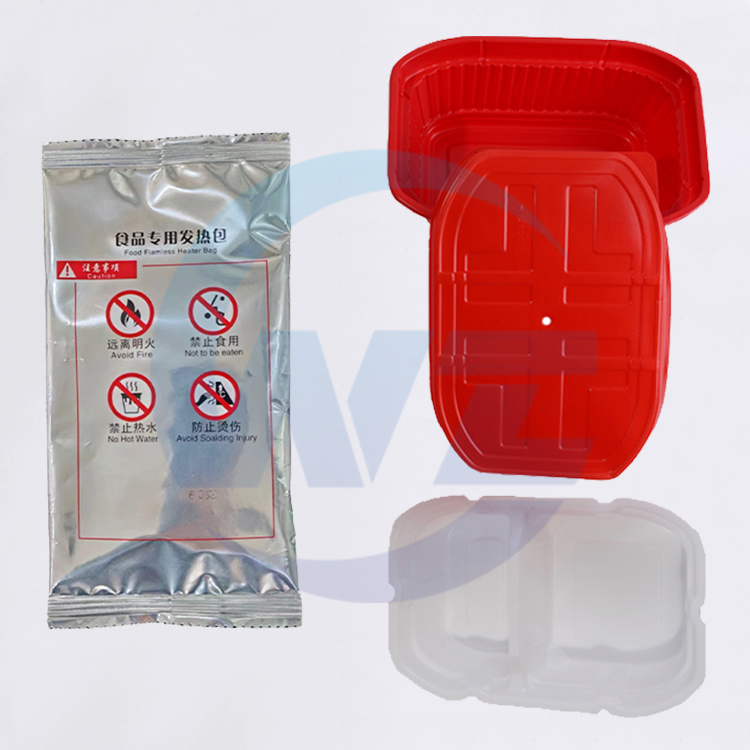by Kevin
Share
by Kevin
Share

Self-heated lunch bags, also known as self-heating meal kits, are a revolutionary solution for enjoying hot meals without electricity, flames, or stoves. These products use a chemical heating reaction to warm food, making them ideal for outdoor adventures, military use, and emergency situations. A common question is: “Do you add water to a self-heated lunch bag?” The answer is yes—water is the key activator for the heating process. This article explains how it works, how to use it safely, and what to look for when choosing a self-heated lunch bag.
Features of Self-Heated Lunch Bags
Flameless Heating
Self-heated lunch bags rely on an exothermic chemical reaction that generates heat without flames. This makes them safe to use in enclosed spaces like tents, vehicles, or offices.
Portability
Lightweight and compact, these bags are easy to carry in a backpack or emergency kit. They are designed for mobility and convenience.

Quick Activation
With just the addition of water, the heating process begins within seconds, and meals are typically hot and ready to eat in 10–20 minutes.
Food-Grade Materials
The inner food containers are made from safe, heat-resistant, and often BPA-free materials, ensuring no harmful chemicals leach into your meal.
How Are Self-Heated Lunch Bags Made?
The manufacturing process ensures safety, efficiency, and user-friendliness.
Heating Element Composition
The heating pack usually contains food-grade chemicals like calcium oxide, magnesium powder, or iron powder. These materials are chosen for their ability to produce a controlled, safe amount of heat when mixed with water.

Packaging Design
The food and heating element are kept in separate compartments within the bag. This prevents premature activation and ensures the reaction only occurs when the user is ready.
Sealing and Safety Mechanisms
The bag is sealed to contain heat and steam. Many models include pressure-release valves to prevent excess buildup and ensure safe operation.
Popular Uses of Self-Heated Lunch Bags
Outdoor Adventures
Hikers, campers, and hunters use self-heated lunch bags to enjoy warm meals in the wilderness without carrying cooking gear.
Military and Tactical Use
Soldiers rely on these meal kits in the field, where quick, safe, and portable food heating is essential.

Emergency Preparedness
In disaster scenarios or power outages, self-heated lunch bags provide a critical source of warm food when other methods are unavailable.
Work and Travel
Workers in remote locations or travelers on long journeys use these bags for convenient, hot meals without needing a kitchen.
How to Choose a Self-Heated Lunch Bag
Check Heating Time and Temperature
Different models heat at different rates. Look for products that reach a safe eating temperature (typically 60–70°C) within 10–20 minutes.
Evaluate Meal Options
Some self-heated lunch bags come with pre-packaged meals, while others allow you to use your own food. Choose based on your dietary preferences and needs.
Look for Safety Certifications
Ensure the product has been tested and certified for safety. Look for markings indicating compliance with food safety and chemical regulations.
Consider Portability and Storage
Choose a compact, lightweight design that’s easy to pack and store, especially if you plan to use it for outdoor or emergency purposes.
How to Use a Self-Heated Lunch Bag
Step 1: Prepare the Meal
Place your pre-cooked meal into the food compartment if it’s not pre-packaged.
Step 2: Add Water
Open the heating pack compartment and pour in the specified amount of water (usually 50–100ml). This step is crucial—without water, the chemical reaction won’t start.
Step 3: Activate the Heating Process
Seal the bag tightly. The water will mix with the heating element, triggering the exothermic reaction.

Step 4: Wait for Heating
Allow 10–20 minutes for the meal to heat through. Avoid opening the bag during this time to retain heat.
Step 5: Enjoy Your Meal
Carefully open the bag, remove the food container, and enjoy your hot meal.
How to Care for and Store Self-Heated Lunch Bags
Proper Storage
Store unused bags in a cool, dry place away from moisture and direct sunlight to preserve the effectiveness of the heating elements.
Disposal Guidelines
After use, dispose of the heating element according to local regulations, as it may contain reactive chemicals. Many components are recyclable.
Inspect for Damage
Do not use bags with torn or damaged packaging, as this could lead to unsafe chemical exposure or ineffective heating.
Conclusion
Self-heated lunch bags are a safe, convenient, and reliable way to enjoy hot meals in any situation. Yes, you do add water to activate the heating process, making it simple to use even for beginners. By choosing a high-quality product and following the instructions carefully, you can ensure a safe and enjoyable experience every time.
If you have questions about selecting or using self-heated lunch bags, feel free to contact us. Our team is ready to provide expert advice and product recommendations tailored to your needs. You’re also welcome to reach out for consultations or visit us for a demonstration!
STAY IN THE LOOP



